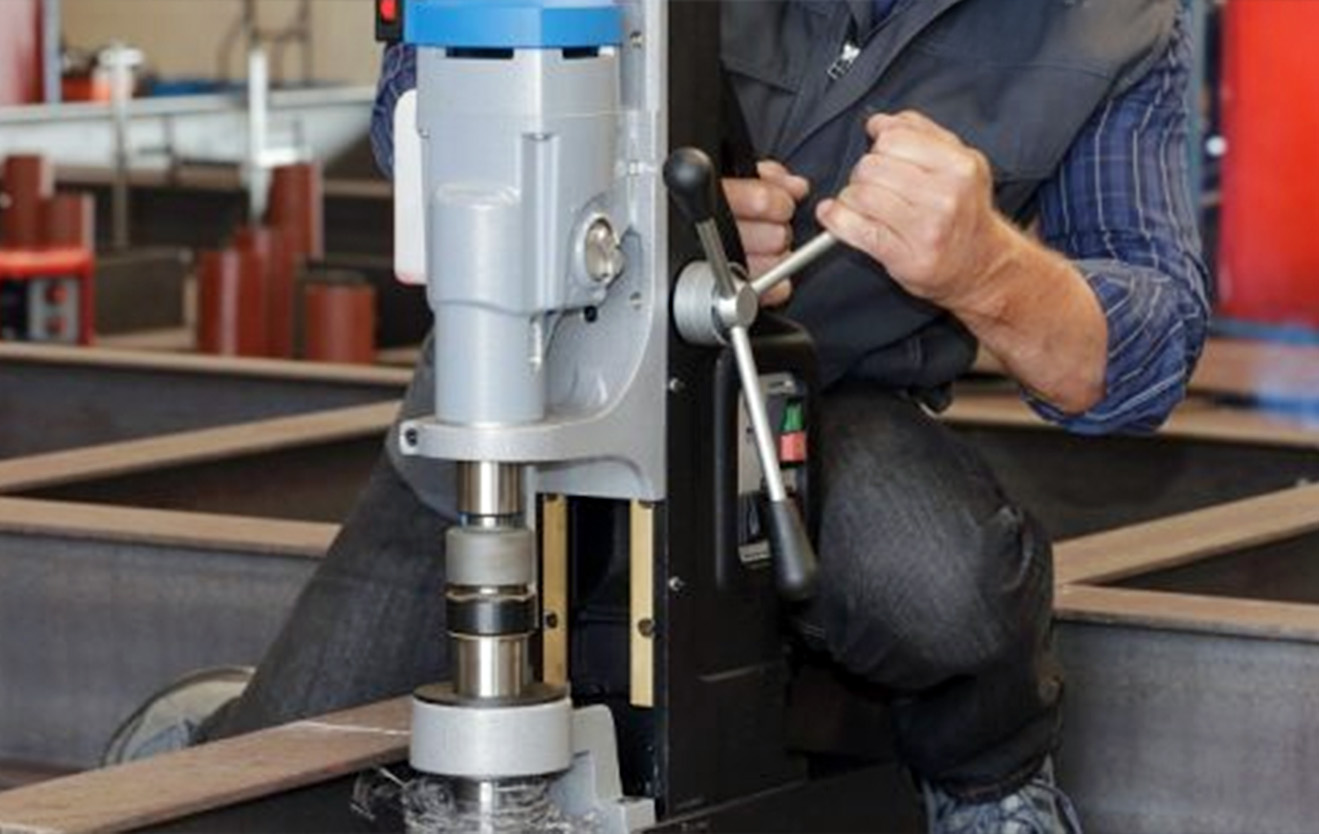
For offshore projects and the maritime industry in the UAE, it is especially important to use equipment that ensures maximum accuracy, reliability and stability. Magnetic drill machines have long established themselves as an indispensable tool for drilling holes in steel and other ferromagnetic materials, where high adhesion, structural stability and mobility are critical. These devices combine portability and performance, allowing you to work in confined spaces, on vertical and horizontal surfaces, as well as in conditions of increased vibration.
A magnetic drill machines are equipped with an electromagnetic or permanent magnetic base, which provides a grip force of up to 10,000 N and allows the device to be fixed to metal without additional clamps. This fixation minimizes the risk of displacement and distortion of the workpiece, as well as increases operator safety. Modern models are equipped with reversible motors and a speed control system, which makes it possible to use different cutting tools: annular cutters with diameters from 12 mm to 200 mm, twist drills, milling and rotary nozzles. The working accuracy reaches the level of 0.01–0.05 mm, which is especially important when drilling large-diameter holes on structures of ships, drilling platforms and power equipment.
Due to their compact design and weight from 9.9 to 25 kg, such machines are easy to move on site and allow drilling even at height or in hard-to-reach places. The spindle stroke varies from 39 mm to 255 mm, depending on the model, and the motor power ranges from 800-1800 watts when powered by 220-230 V AC, 50-60 Hz.
Drilling accuracy plays a crucial role in shipyards and offshore infrastructure. Installation of pipelines, repair of ship hulls, assembly of turbine structures and installation of fasteners require holes located strictly in the center. The use of a magnetic base ensures the stability of the equipment even on inclined surfaces, and the high drilling speed reduces the operating time. Compact models with low spindle travel are used for tasks in confined spaces, while powerful machines with increased drilling depth are suitable for massive parts.
Marine conditions are characterized by high humidity and corrosive activity. Therefore, magnetic drill machine suppliers strengthen the protection of the windings, add magnetic adhesion indicators and overheating protection systems, which significantly increases the service life of the motor and coils. In harsh offshore conditions, it is important that the equipment not only withstand constant loads, but also maintain stability during long-term operation.
One of the key factors of efficiency is the operator's convenience. The ergonomic body shape and compactness make it possible to reduce fatigue when drilling in ceiling or side positions. Overheating protection, built-in indicators and the ability to lock the machine with a chain make the process safer. Unlike traditional drilling presses that require additional clamps, the magnetic base eliminates the risk of damage to the workpiece and reduces preparation time. This is especially valuable in the context of urgent repairs at offshore facilities, where every minute counts.
In addition, the reversible motor opens up possibilities for performing operations not only for drilling, but also for threading, cutting or countersinking. This functionality allows you to use one piece of equipment for a whole range of tasks, which optimizes costs and reduces the amount of tools transported per facility.
Although the initial investment in magnetic drilling machines is higher compared to manual devices, their use provides significant savings in the long run. The high speed of operation, the accuracy of the holes and the reduction of defects make it possible to reduce downtime and reduce the cost of correcting errors. For offshore and offshore companies in the UAE, this means not only financial benefits, but also increased project reliability.
The use of such machines in the construction of bridges, drilling rigs, in the railway industry and in the energy sector emphasizes their versatility. The possibility of vertical and horizontal drilling, working with different types of cutters and adapting to limited spaces make magnetic machines the optimal choice for high-complexity tasks.
For companies working in shipbuilding, energy and construction, these machines have become not just a tool, but a strategic solution to improve efficiency and safety.